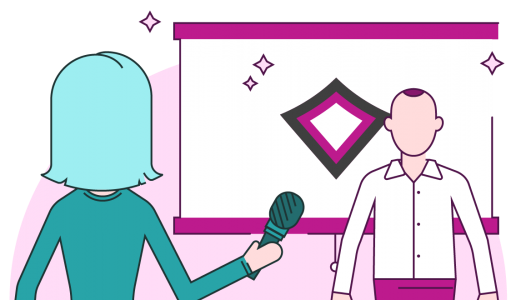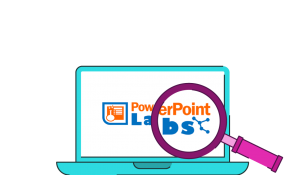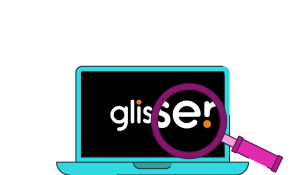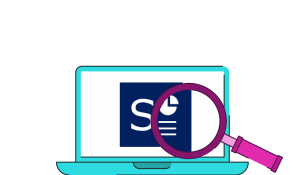This edition of our expert interview series is a special one because not only do we highlight one of the industry leaders in PowerPoint add-ins, but we also introduce our readers to the newest member of the BrightCarbon team, Jamie Garroch. Jamie puts the ‘power’ in PowerPoint add-ins. He’s written code for dozens of amazing functionality boosters, some for specific organizations and some available for all users. Read on to learn about the experience that Jamie is bringing to BrightCarbon and how it will help clients and the presentation community use PowerPoint more effectively.
Can you tell us a little bit about your career so far and how you go to working with PowerPoint?
I’ve been in telecoms marketing for the majority of my career. I graduated years ago just at the beginning of the mobile phone industry. That career has taken me around the world. I’ve been very fortunate to work in the UK, then moving to Hong Kong for a few years, France for three more, and I’m now based in the US.
During the whole of that time the one piece of my day that I really enjoyed the most was working with the sales teams to create content in PowerPoint that they can then use in front of a client or prospect to try and pitch a new product or service. That was the thing that gave me the real buzz: seeing sales teams come back from a client and say ‘this worked’ or conversely ‘this didn’t work’. That engagement with the client on the presentation side is what really got me into PowerPoint in the first place.
So, you were originally in content creation?
I actually ran a team of product marketing professionals before I started with YOUpresent. I was working in France at the time and we had a team of people across the world who were managing a portfolio of products and building the content from scratch for the go-to market activities, with the messaging and the content which they were creating for their individual product portfolios.
How did that translate to your work with PowerPoint add-ins?
Our CEO at the time gave this speech during one of our strategy cycles and said, ‘We’ve got a lot of product in our portfolio, I don’t really care what it is that you go and sell, just come back with a sale’. We had such a diverse array of products that it was very difficult for the sales team to go into a meeting and cover everything.
I realized that they didn’t need a linear presentation, they almost needed to be able to react almost immediately and steer the presentation in a certain direction rather than going through slides 1-20 and then at the end have a call to action. My team and I came up with an extremely complex presentation that had over 100 slides and over 1,000 links which enabled them to navigate that presentation in a non-linear way.
Much like a website you don’t just go through looking at page 1 and page 2 until you get to the end, you navigate the content to the area of interest. But having done that and built this thing, it became a complete nightmare to manage it. Every time you inserted a new page you weren’t just updating one link you were updating links all over the place because the whole deck was very interconnected.
Coincidentally at the same time the French company was bought out by a Canadian company. After some discussion about whether I wanted to move countries again, I decided I’d like to start a new business, based on this idea of ‘how can you make presentations more interactive in a real face-to-face situation?’ So I left, started YOUpresent, and engaged with a software company in India to develop my first add-in. I stumbled into PowerPoint add-ins, based on that desire to make it easier for sales people to communicate.
How do you explain what a PowerPoint add-in is to people who aren’t familiar?
The easiest way to describe it is if you consider the smartphone that most of us have got in our pockets. You go into the store and you buy a smartphone and it comes with a whole bunch of functionality already installed—you can make calls, look at your calendar etc. Then you decide ‘well actually I’ve got this particular interest in social media, or sketching, or something because I like to draw on the way to work’ So you go to the app store and you download an app which extends the functionality of your phone, and that’s exactly what happens when you get an add-in for PowerPoint or any of the other Office suite of applications. You are extending the built-in functionality to do something that wasn’t there when it was first installed on your computer.
What kind of things can you do that are accessible to you, and what kind of things are walls that you can’t break or modify?
A lot of the influence of what I do comes from a need during my own working day. So, when I’m not creating add-ins I’m often creating presentation content for clients, and as I start looking at it, I realize there’s something that I need to repeat over and over again. So quite often software creation is driven by the need to automate something: if you’ve got a repetitive task that a human being is doing over-and-over again that is an ideal candidate. For example, let’s say you have a certain set of animations that you need to apply over-and-over again, like a fade animation and then change the timing and then a spin or a grow, if you count the number of steps you’ve done 20 steps to create one combined animation. You can take all of that, and code it, and create one button in the ribbon. So, automation is often one of the key drivers for creating the functionality within add-ins.
There are other things which in a different perspective actually change the functionality of PowerPoint. One of the features within the YOUtools add-in gives you the ability to set up guides on your presentation in a more intuitive manner. So at the moment within PowerPoint if you wanted to build up a grid you’d do it one guide at a time and it’s quite laborious and its quite difficult to position them exactly. But if you look at some other popular design applications that are available in the market they take a different approach and you can say ‘okay I want to divide this slide up into three columns, two rows, I want a gutter, some of the margins have to be 0.125 inches, create guides that give me that layout’. That’s one of the features that I’ve built into YOUtools: being able to create and load guides in a much more intuitive manner.
Another category of add-ins is more content-oriented. So, let’s say you have a library of icons or charts or table designs in your organization, you can build added functionality which exposes those and shows them directly in the ribbon.
The model that Microsoft has produced allows third-party publishers to extend the functionality of the Office apps. It’s been designed in such a way that we can tap into and extend the graphical interface to include visual content, which makes it easier for users to find that content without having to dig through their file server or the cloud because now it’s available directly on the ribbon. It’s a more content-oriented view of what you can do with add-ins. I think those are the three best examples – automation, developing new design tools, and content-driven.
At this point in your career what percentage of your ideas for new add-ins comes from your own work and what comes from other people coming to you with requests?
It’s changed over the years because in the beginning people didn’t know who I was or what I was doing with the company. As my reputation has grown over the years and I’ve been exposed to talented people who are looking for more productivity tools, and ways to improve their workflow, I’m seeing more and more requests which is fantastic because that’s part of the buzz that I get out of doing this kind of thing. They become more productive, they use great tools which help them speed-up their design work and, in some cases, do things that nobody else can do so it gives them a competitive advantage.
At the recent Presentation Summit in September in San Diego I got many more requests through corridor chats in between the normal seminar routine. Last year I just had one of those types of conversations with Nolan Haims, one of the Microsoft MVPs who works quite a lot on the Mac side. This year at the Presentation Summit I probably had ten-fold the number of requests come through me. Can I do things in print, can I do things with typography, can I do things with animation? I came away with a whole list of ideas and suggestions for consideration.
So nowadays you’re pretty much flooded with requests from other people, whereas in the beginning it was mostly from you?
Yes, it really has evolved, it’s been a huge swing from my own ideas and my own analysis of how I spend my time, to people asking me for things now. Another good source of input when you want to consider how are people struggling with PowerPoint, you can look at UserVoice online which gives PowerPoint users the ability to register new requests for functionality with PowerPoint. We know in the industry that Microsoft takes it very seriously and they do review it. But Microsoft doesn’t have unlimited bandwidth to create everything that everyone wants, so the ability to extend the functionality via a third-party piece of software allows the community to grow.
Do you think that all these requests for add-ins means that PowerPoint isn’t meeting needs or are needs just rapidly changing?
I think it’s a mixture between the two. Some of the requests I get from clients are so specific to the way that they run their business, that it’s something Microsoft would never put into a general release product. They have a very unique need which isn’t satisfied by the product out of the box, and it shouldn’t be.
On the other hand, there is a need for PowerPoint to become more user friendly and answer some of the very common requests that you see on the likes of UserVoice. I think guides is a good example because it’s not a very easy feature to use. Over time what Microsoft tends to do is introduce a feature, monitor it to see how that’s used; some of these features disappear, some get better and improve over time because they see that people are using those features. So, over time some add-ins will naturally overlap Microsoft functionality. You can see new features coming in as add-ins before they’re available in Microsoft products. It’s a good sign that the community is working together to make the experience that much better.
One particular element that I heard quite a lot is the need to do something with typography. So I’ve done some work on a prototype add-in to look at making things like font kerning and line spacing more intuitive. At the moment there’s a lot of guesswork involved if you’re into typography and you really do need some kind of live way of seeing how the numbers you change are actually rendering the text on the screen. As it stands, you have to go into a dialogue box, enter in the number, click okay and come out and see the results, and you might realize that it’s not quite what you wanted so you have to go back in again and change the number and it’s a circular process of trying to get to the right place. I’ve created a prototype that displays an on-screen slider that lets you see the effect of kerning and the effect of line spacing. It’s a major need that should be reflected in the core product. We can do something as an add-in, but Microsoft can do something much better as part of the native PowerPoint software.
What is the coolest add-in that you’ve been able to create? Either something you’re really happy with, or something that was a particular challenge that you were able to tackle.
I think I’ve probably got an example which touches two of the things that you explained there. Firstly, there’s an add-in called Text-to-Outline, it’s actually a free add-in so it’s one of the ones I’ve put back into the community. It came as a result of a discussion one day that I had with Geetesh at Indezine. He learned that it was possible to use the merge shapes tools in PowerPoint to vectorize text. He worked out that you could use the combine shapes tools to create the vector version of text on a slide. That’s an excellent example of a need that can be automated. There are many steps you have to take to achieve that effect – it’s quite precise. So, I built this text outline add-in and extended it further so it’s not just one piece of text at a time, you can also do all text across a presentation that uses specified fonts.
When I see a slide in front of me I can see the need to automate something just within that small piece of the workspace, but then when you extend it further to a complete presentation which may be 10, 15, 100+ slides then you start to really get the benefit of automating that process, and making the designer’s life so much easier: it’s very powerful from a design perspective.
Another feature which was very complicated to develop was the table format painter, which is one of the tools within the YOUtools add-in. This had been on my personal to-do list for some time. It comes really from the need that I saw registered in UserVoice. People wanted the ability to set the default table format within PowerPoint, and that’s not possible at the moment, hopefully it will be one day. I looked at that and I said, ‘that’s going to be difficult if not impossible to achieve but what can you do to help users overcome that?’ Well, PowerPoint has the Format Painter which lets you pick up the format of text or shapes and apply that to other text or shapes, but it’s not compatible with tables.
It has been an incredibly complicated technical task. It was first demonstrated live by Nolan Haims at the Presentation Summit and it created a real buzz in the room. There were whoops and cries in the audience and people were clapping and cheering. It’s at that moment that you realise you’ve done something that is going to have a big impact on the way people work. That was a really challenging tool to develop, and it’s still being improved – even this week it’s having enhancements to it – but you can imagine taking a table that has 10 rows and 10 columns with different formats within the cell fill, different format within the text, different margins, different borders, and having to manually copy that format from one table to another one cell at a time is very time consuming and expensive from a designer’s perspective so just being able to use the painter and pick it up from one table and apply it to another with a single click is hugely powerful.
If you could ask Microsoft to change one thing about PowerPoint what would it be? Or does it not even matter to you because you can just change it yourself?
This is a very good question because there are limits. Third-party add-in publishers can’t do everything. There are still some things that are integrally part of Microsoft and only they can change them. I think the biggest thing that I get requests for that I unfortunately have to say no that’s not possible is things like, ‘I want to create a totally new animation’, ‘I want to do something a little bit like After Effects and I want to change the acceleration rate over time’ – that kind of thing.
Unfortunately at the moment, and Microsoft is constantly improving and they’re doing a fantastic job at it, but as of today there are a lot of limitations to what an add-in can do in the realm of animation effects. I would like to see quite a significant overhaul of the whole animation engine and the user interface in terms of the way the timeline is exposed to users, in the way that effects are used and can be created and modified, and granularity in the way that those effects are built. I think that will be one of the biggest ones.
The second one would be to continue to ask Microsoft to invest in extensibility and add-in compatibility within the Mac version of PowerPoint because there are still some things that are core and missing. The guide features that I developed in YOUtools for example – none of that functionality is available on Mac because Microsoft simply hasn’t opened up the software interface that’s available in the PC on the Mac side.
In addition, there is no way to dynamically load visual content into the ribbon on the Mac. That means the kind of content-driven service models that you have for add-ins on the PC are not possible to build into the ribbon on the Mac side.
You can use the new web-based Office add-ins which Microsoft are promoting as cloud-based solutions, and you can get those add-ins directly in any of the Office applications, but that renders some content typically on a side pane on the right-hand side of the application window and there’s no SVG support. Having the ability to have this content loaded into various galleries as drop-downs in the ribbon can often give a much more enhanced user experience. I’ve got an add-in which allows you to have a library of icons, slides, graphics, and illustrations; the whole thing is categorized and built in such a way that you have multiple entry points to be able to get that content in front of the user – and it’s put directly in front of the slide. So that kind of add-in today is not possible to build on the Mac side.
I want to shift a little to talk about you coming on board with BrightCarbon. What made you decide to join BrightCarbon and what kinds of things are you hoping to achieve by becoming part of our team?
Unusually, it’s been quite a slow burning process, and one that’s given me the ability to observe BrightCarbon probably over a year. I’ve been given the opportunity to work with BrightCarbon on some partnered projects and we had a really good experience. I got to know some of the key people, and we had a lot of fun in addition to a lot of challenges in some of the things that we were working on together. It gave me a real comforting feeling about the company and it inspired me in a way to see the level of quality and content that comes out of BrightCarbon in every avenue in such a consistent manner, it’s just an inspiring interaction with the organisation.
I’ve seen people like Richard Goring at the Presentation Summit recently, the things that go up on the social media channels, the videos that you create – everything is just so beautifully perfect that it was almost an ambition of mine to come and work for BrightCarbon because the company just looked to be such an amazing place, doing amazing things. It’s growing really well, you’ve got this presence in the US. As a thought-leader, some of the articles I read in the blog fascinated me, some of the ideas for add-ins even came from there. I even started the idea for the typography add-in based on something I saw on the BrightCarbon blog!
The element of teamwork is important to me, as is the size of the company. I worked for a company that was over 100,000 employees once and I don’t think that I ever want to repeat that experience. I much rather be part almost of a family, knowing everybody’s name, knowing a little bit about the people that I’m working with, brainstorming and coming up with new ideas and being challenged as well. When you work for yourself you sometimes question whether you’re doing the right thing or not; it’s nice to have people to bounce ideas off and tell you ‘yes that’s a great idea’ or ‘please don’t do that’. So being part of a team that’s going to really think and question everything that’s done is going to be a huge benefit.
So, what will happen to YOUpresent? How will you joining BrightCarbon affect your current business?
YOUpresent is going to go through a transition period. Joby and I have agreed that we will continue to support the customer base that’s already been built up. Some of that customer base will come under the design umbrella—content and presentation design – and they will receive a far superior service than I’ve been able to offer them so they will be very pleased with that.
On the add-in side, customers who have already bought add-ins have perpetual licenses, so they will continue to be able to use those. In the fullness of time people will start to see less public activity in YOUpresent to the point where I will be working full-time with BrightCarbon and obviously not having the bandwidth to do things on YOUpresent. It will go into a state of hibernation because it will still own pieces of intellectual property but it will cease trading pretty early on in the relationship.
We’ll go through this transition period, support the existing customers, brief things around a little bit, make sure there’s no disruption, and then you’ll see me really focusing on helping to extend the brand of BrightCarbon and the business in the US. The products which we continue to develop will benefit from extra minds looking at what functionality goes into things like YOUtools for example. I have high confidence that YOUtools will continue to be developed but it might have a fresh look, a rebrand, and that will be done with the help and support system of a larger team at BrightCarbon.
Editor’s Note: Jamie did it! With the help of some of BrightCarbon’s expert PowerPoint designers, Jamie created our incredible PowerPoint add-in BrightSlide. Created for PC users by PowerPoint experts the BrightSlide add-in helps users create, polish, and edit presentations at speed. It draws on industry-standard shortcuts to boost users’ workflow and provides amazing, extra functionality we’ve only dreamed of. And BrightCarbon have released it to the public for free! Download BrightSlide here and see what all the fuss is about!
Leave a comment




